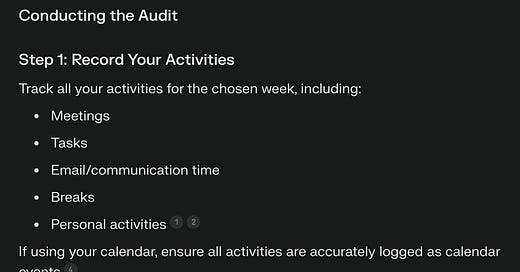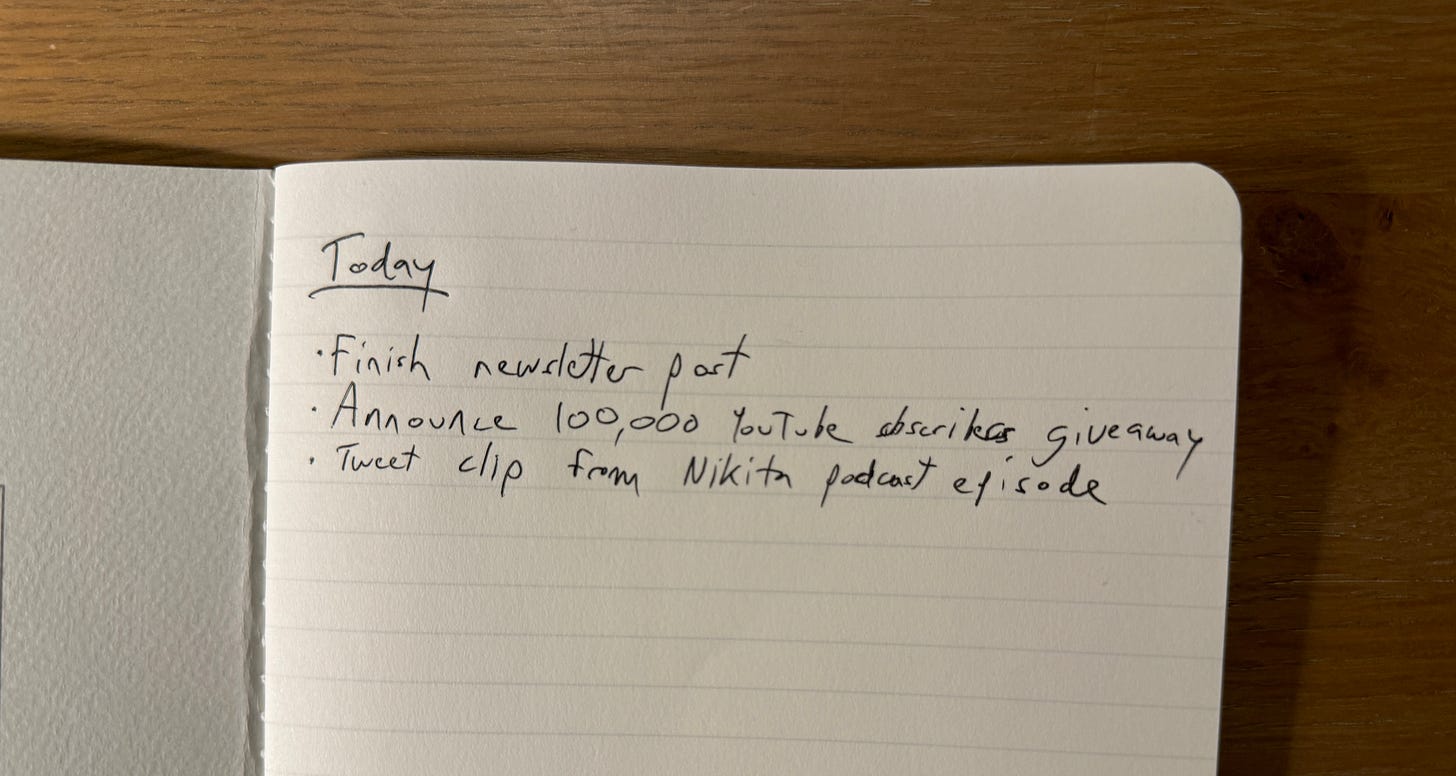Part 2: Time management techniques that actually work
Seven more tactics for making the most of your precious time
👋 Hey, I’m Lenny, and welcome to a 🔒 subscriber-only edition 🔒 of my weekly newsletter. Each week I tackle reader questions about building product, driving growth, and accelerating your career. For more: Best of Lenny’s Newsletter | Hire your next product leader | Podcast | Lennybot | Swag
🚨 Enter to win an all-expenses-paid ticket to the Lenny & Friends Summit
My YouTube channel just crossed 100,000 subscribers (😱), so to celebrate, and to thank you for listening, I’m hosting my biggest ever giveaway:
Win an all-expenses-paid ticket to the Lenny & Friends Summit on October 24th in San Francisco. One lucky winner will get a ticket to the summit, a round-trip flight to San Francisco, and a hotel stay for two nights.
To enter, just subscribe to Lenny’s Podcast on Apple, Spotify, and YouTube, leave a rating, and fill out this form.
Already did these things? You can still enter!
I’ll pick a winner on August 29th and notify them by August 31st. Enter here. Good luck!
Now, on to this week’s post…
My post a few weeks ago on time management techniques that actually work is on track to be my most popular post ever (wtf!). Since I left a bunch of tactics out of that post to keep it from feeling overwhelming, I’ve got seven more productivity tricks for you that I use regularly:
1. Set arbitrary deadlines
Deadlines work. Even arbitrary ones.
One of my favorite techniques for getting someone to finish something that’s important but not urgent is to come up with an arbitrary deadline together. I say to the person, “Let’s come up with an arbitrary deadline!” We both know it’s made up, but there’s a weird gravitational pull once you’ve put a date out there.
It’s important to have the person doing the work pick the deadline so that it’s a date that works for them. You’d be surprised how often it’s very reasonable. And how often they hit it.
Pick a waiting-for off your list that’s been lagging, and float the idea of picking an arbitrary deadline to that person.
2. Use pen and paper for your to-dos—and rewrite them each morning
Something I’ve learned about myself is that if my to-dos are sitting inside an app on my laptop, the one place I don’t want to look is that app on my laptop. There’s hard work to do there! Let’s check my email and Slack channels for the thousandth time instead.
However, when my to-dos are sitting right in front of my face, in a nice notebook I can’t swipe away (and always have with me), I’m much more likely to see the work I need to do, and thus work on the things I should be working on.
A secondary trick I found to be super-effective is to rewrite my to-dos each morning on a fresh page. I tear out the previous page, transferring anything that wasn’t done but is still a priority for today to the new page. I rethink my top 1-3 priorities and, in the process, remove stuff that I’ve been transferring for too many days.
As a bonus, it also feels so damn nice to cross out a to-do physically, and tear out pages and throw them away. It may be irrational, but it’s much more satisfying than checking a checkbox in a to-do app.
A reader shared the same advice with me:
3. Say no to stuff you’ve said yes to
In the previous post, I shared a tactic for knowing when to say no: ask yourself, would I say yes if it were tomorrow? Well, often we still say yes, and today is now almost tomorrow. And you’re wishing you didn’t say yes.
Here’s the good news: often you can still get out of it, without much issue. This will save you a bunch of time and stress, and it’s almost always not a big deal to that person. It just takes crafting the right message to that person.
There are basically three routes you can take here:
Light: “Hey John, I see this presentation I offered to give is coming up, and I’m finding myself unexpectedly slammed right now. I’m still totally on board with giving it, but I wanted to just check—how important, and timely, is this presentation to your team? If it’s not that big of a deal, I’d love to skip it, or push it out. Let me know if that’s OK. But again, I don’t want to cause you trouble, so if it’s important, I’m still 100% happy to make it happen.”
Medium: “Hey Michelle, I noticed our meeting is coming up later this week. Any chance we could skip the meeting and knock it out over email async?”
Heavy: “Hey Steven, bad news. I won’t be able to make the coffee chat we have coming up next week. Something timely came up, and I need to prioritize it. Very sorry about this.” ← Try not to do this, but it’s also OK occasionally.
Backing out of something can feel terrible, but once you’ve experienced the relief from not having to do something your former self agreed to, you’ll find there’s a lot of power here. Better still, you’ll get better at saying no in the first place.
4. Build out a library of text replacement snippets
Anytime I find myself writing out an address, phrase, or paragraph over and over again, I turn it into an auto-expanding snippet. I’ve created snippets for common email replies, URLs, email addresses, and sentences I find myself using often.
To do this, I’ve settled on using an app called TextExpander. It’s fugly, but has the best combination of features. Here’s a screenshot of some of my snippets:






